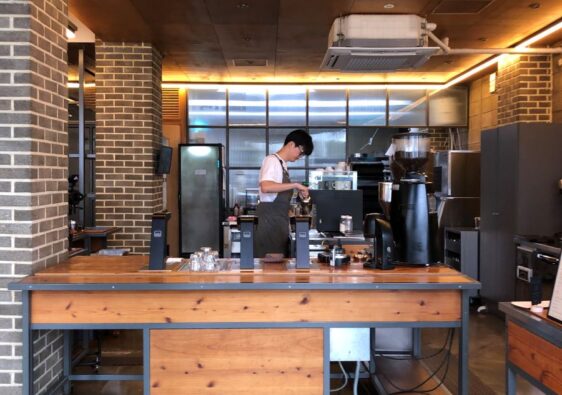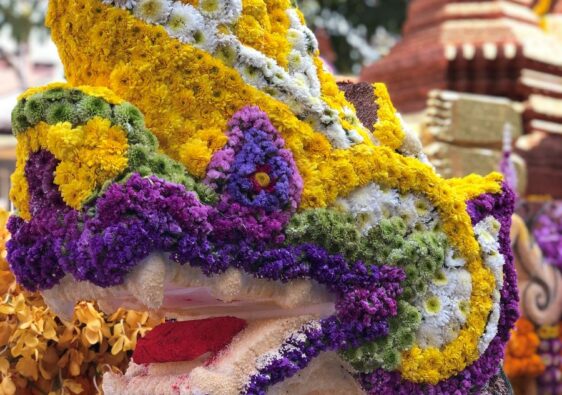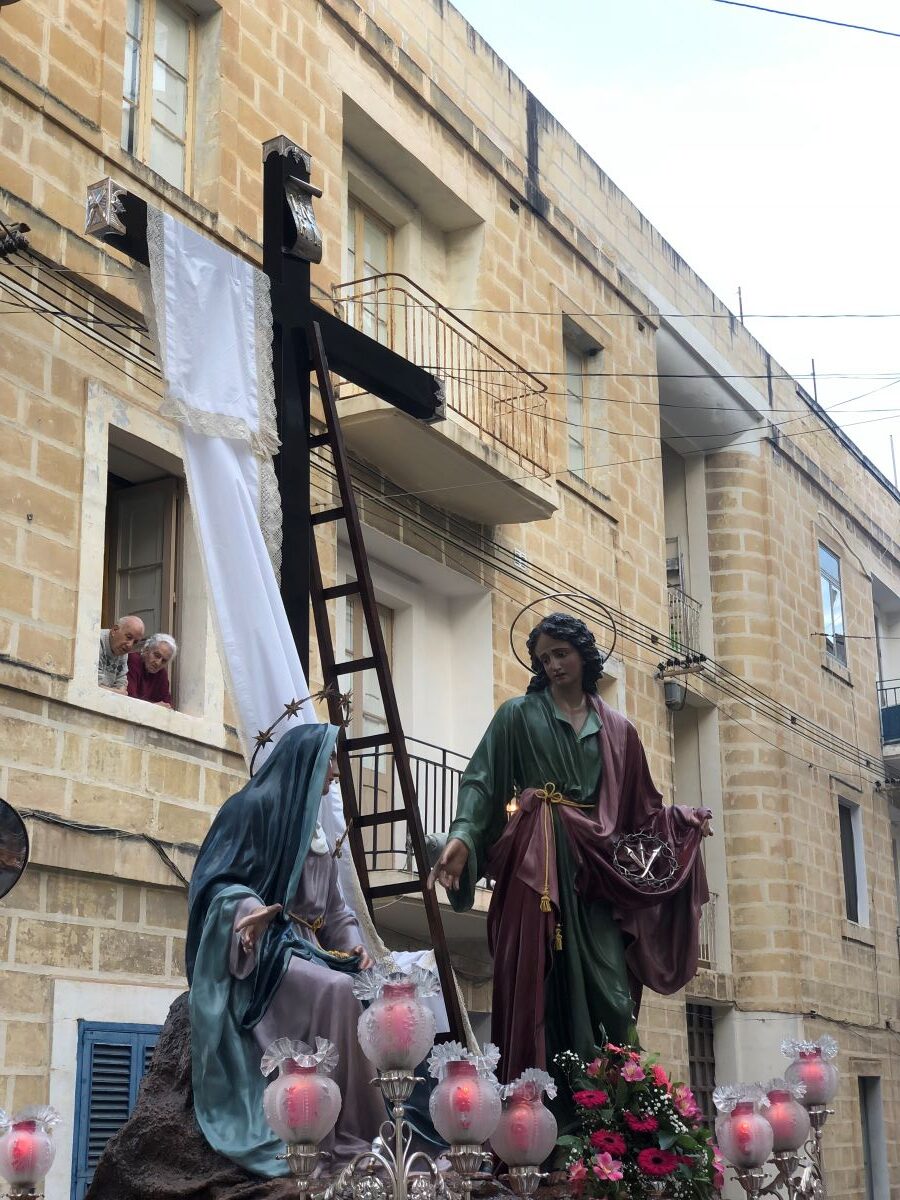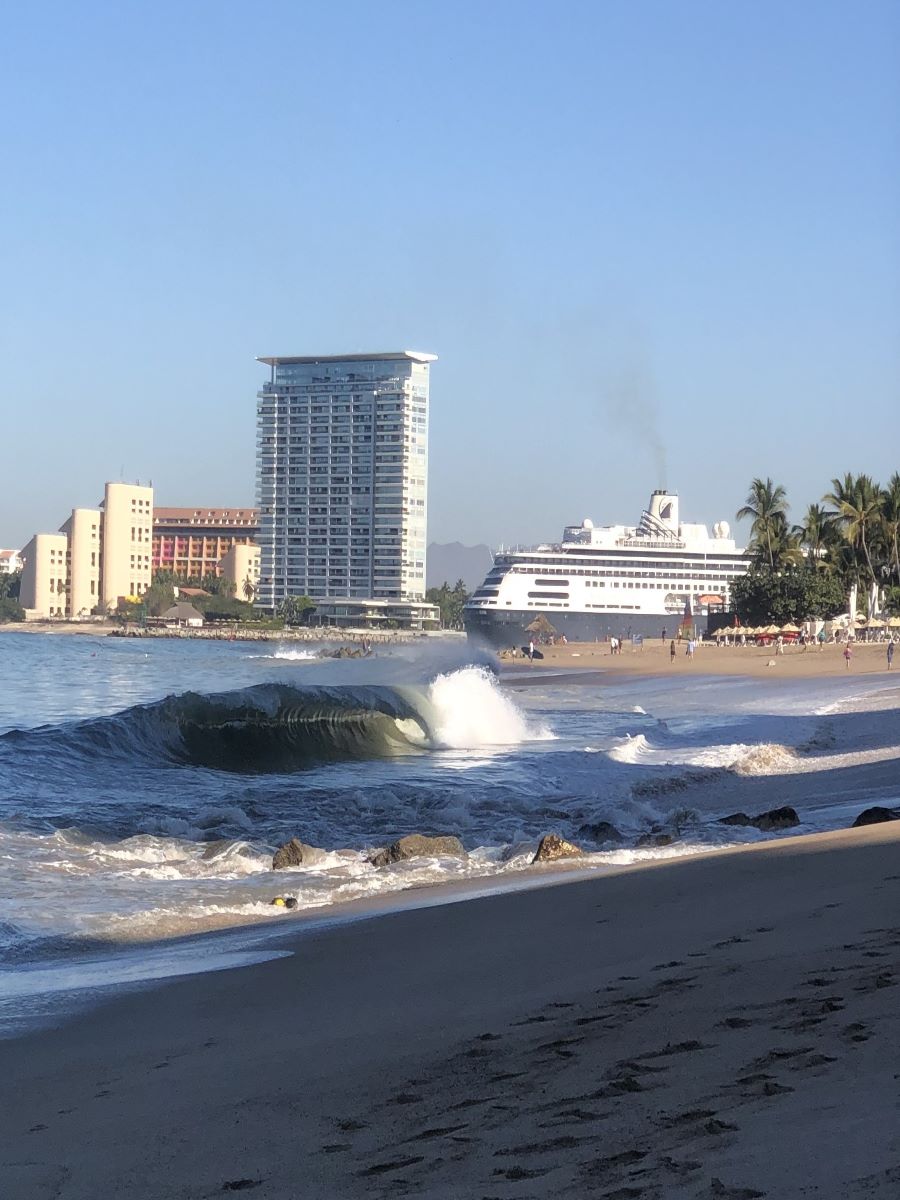Dubbed as Europe’s most ‘boring’ capital city, I wasn’t sure what to expect upon my arrival. Was there going to be anything to see here? Only 30,000 visitors arrive each year, there isn’t a whole lot of information available online to learn about exactly what this city is like. With the aide of a map from the visitor’s centre, here is what to see in Podgorica Montenegro according to the Tourism Organization.
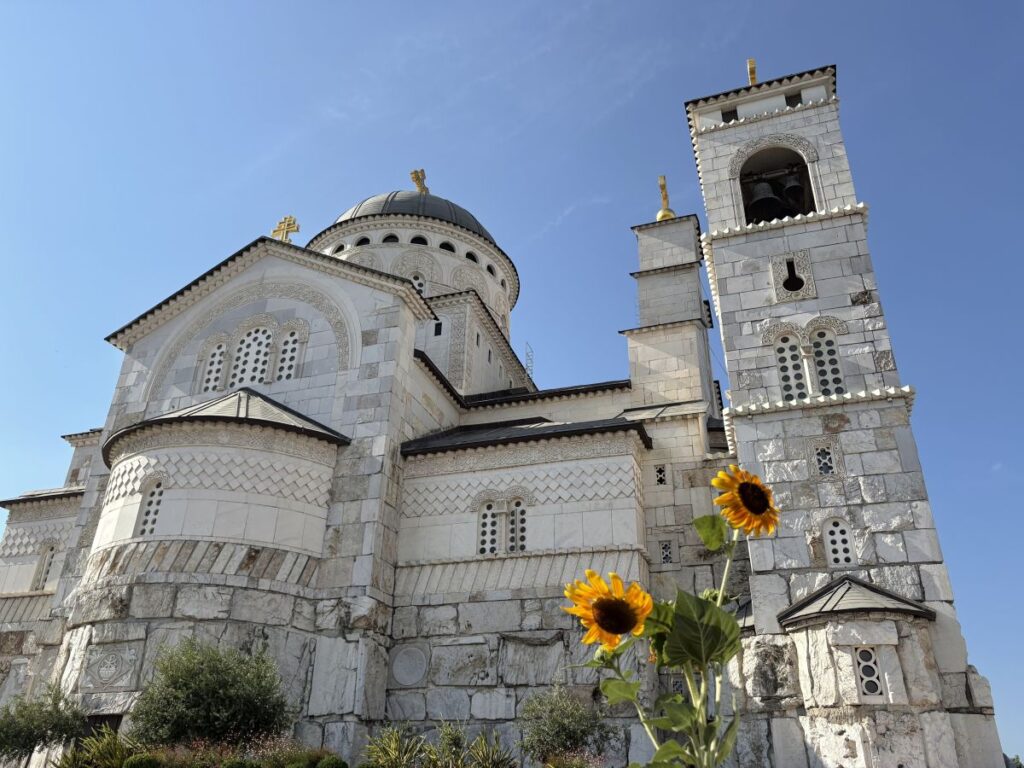
Brief History
The reason there isn’t much here is quite a tragic one. You see, in WWII, the Germans occupied the city. As a result, the Allies, mostly the Americans, bombed the city to smithereens. Over 70% of Podgorica was levelled. The result? There is virtually nothing left of any age. Most of the city is barely 80 years old. And a large chunk of that was before it was an independent country, when it was part of Yugoslavia. The bulk of the architecture here, is Yugoslav, or socialist. Concrete-centric, utilitarian….’boring’.
So, What is Here?
Well, this is the map that is provided by the Tourism Organization with 21 sites listed on it. Some of these are locations to police and ambulance and such so I will breeze through those. Others are a little more interesting. Let’s go!
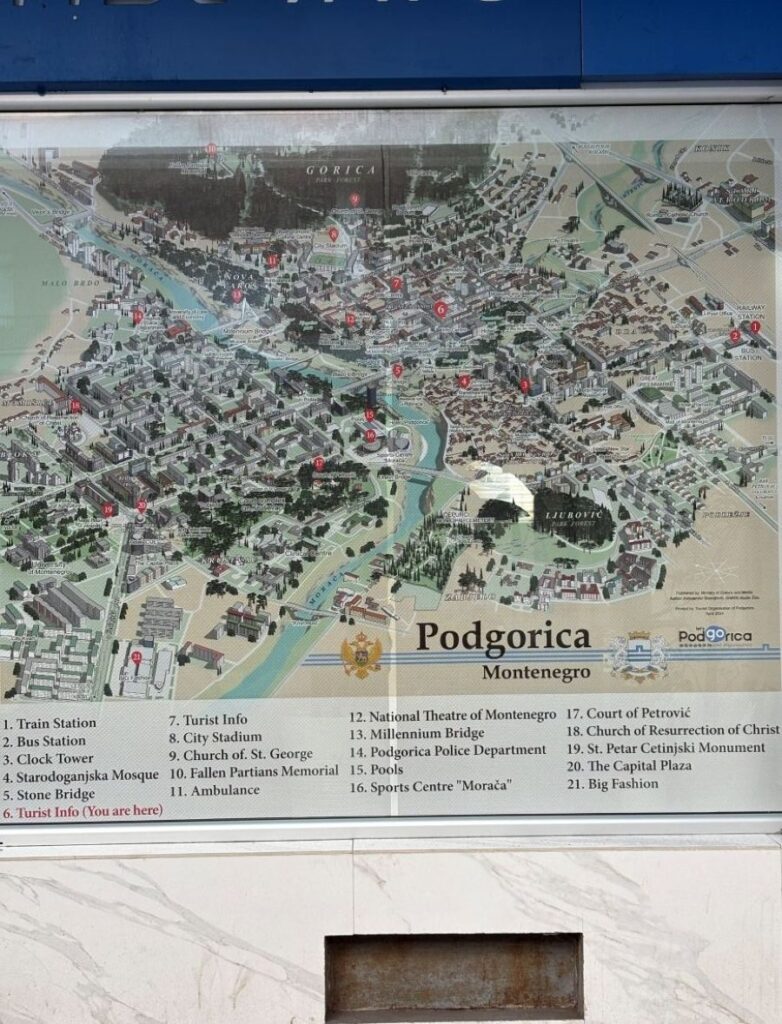
1 & 2
Train Station and Bus Station. Photographed below, the train station is original, has had no refurbishments and it shows. I have taken two trains now, one was Yugoslav era, vintage and authentic, I loved it. The second was more modern and even had A/C!
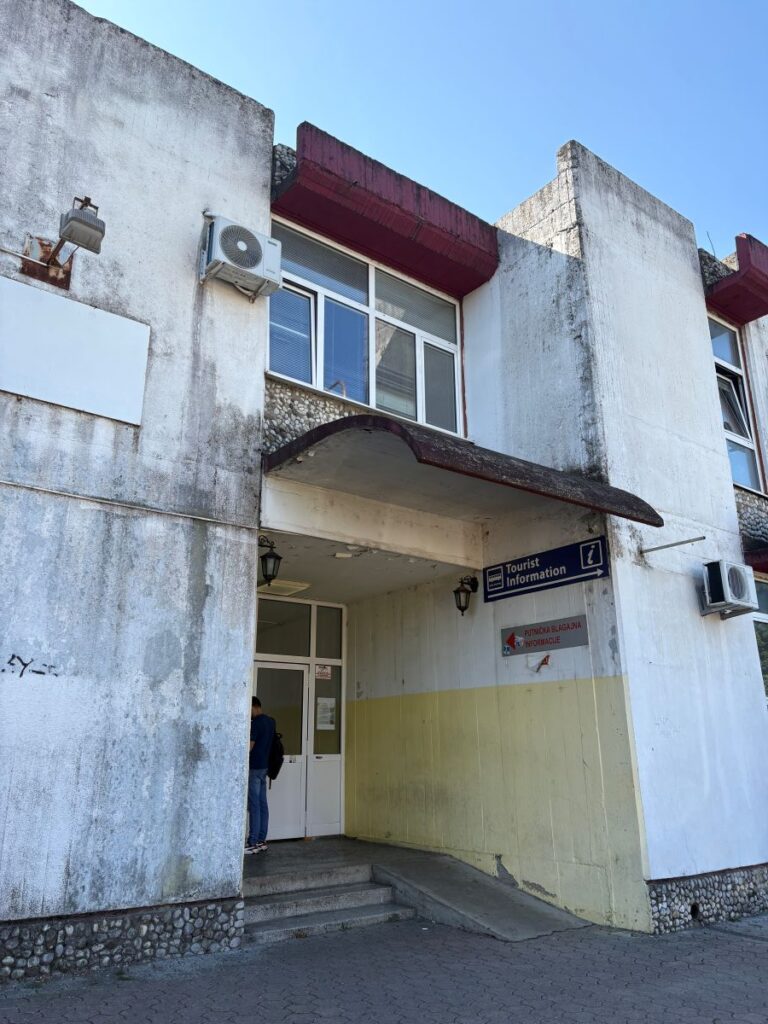
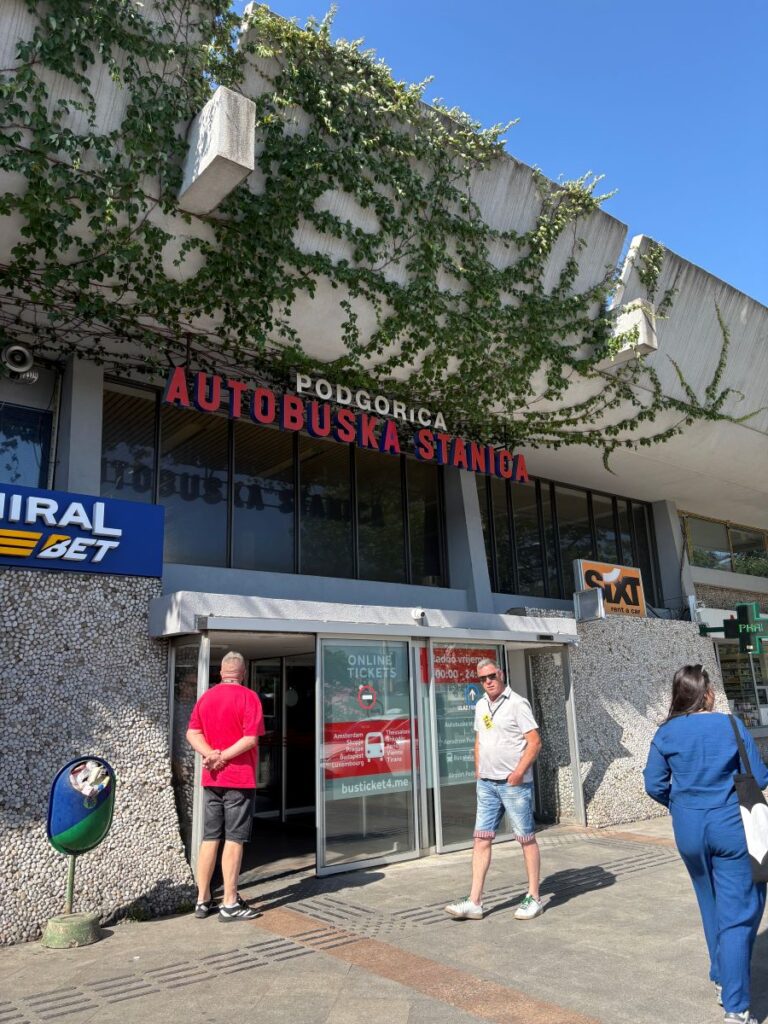
3, 4 & 5
All located in Old Town of which very little remains of the Ottoman empire. Number 3 is the Clock Tower, 4 is the Starodoganjska Mosque and 5 is the Stone Bridge. The clock tower and mosque were built by the same patron and both in the 17th century. They were heavily damaged during WWII but these two structures alone, with gifted funds from Turkey, were able to be restored.
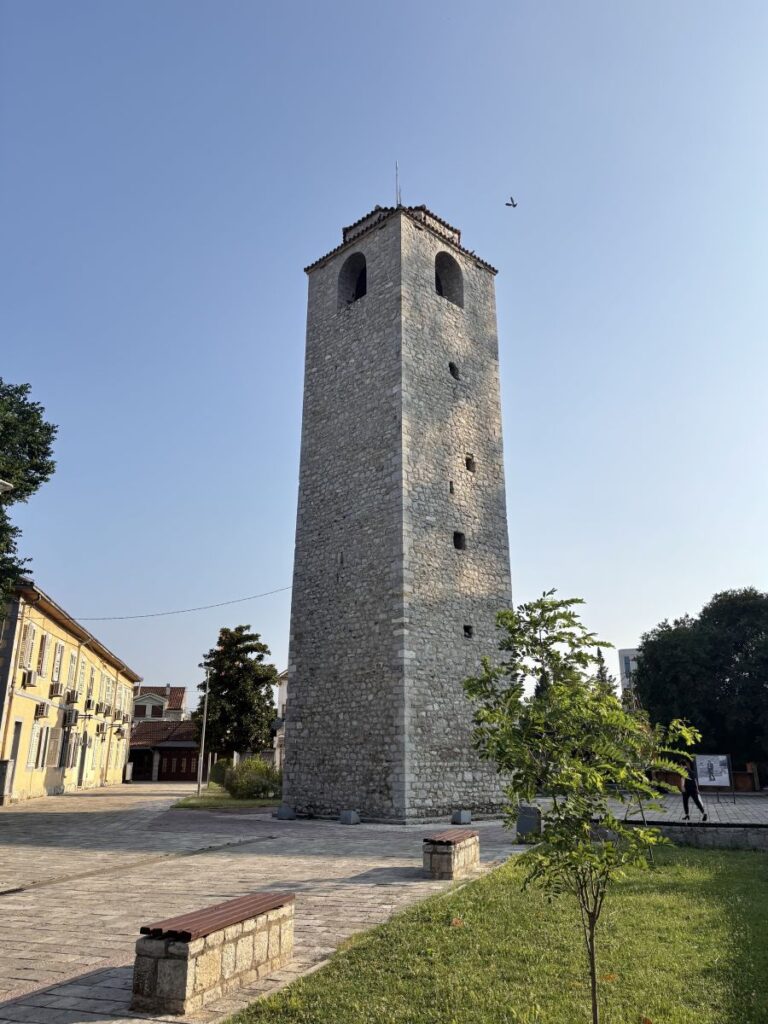
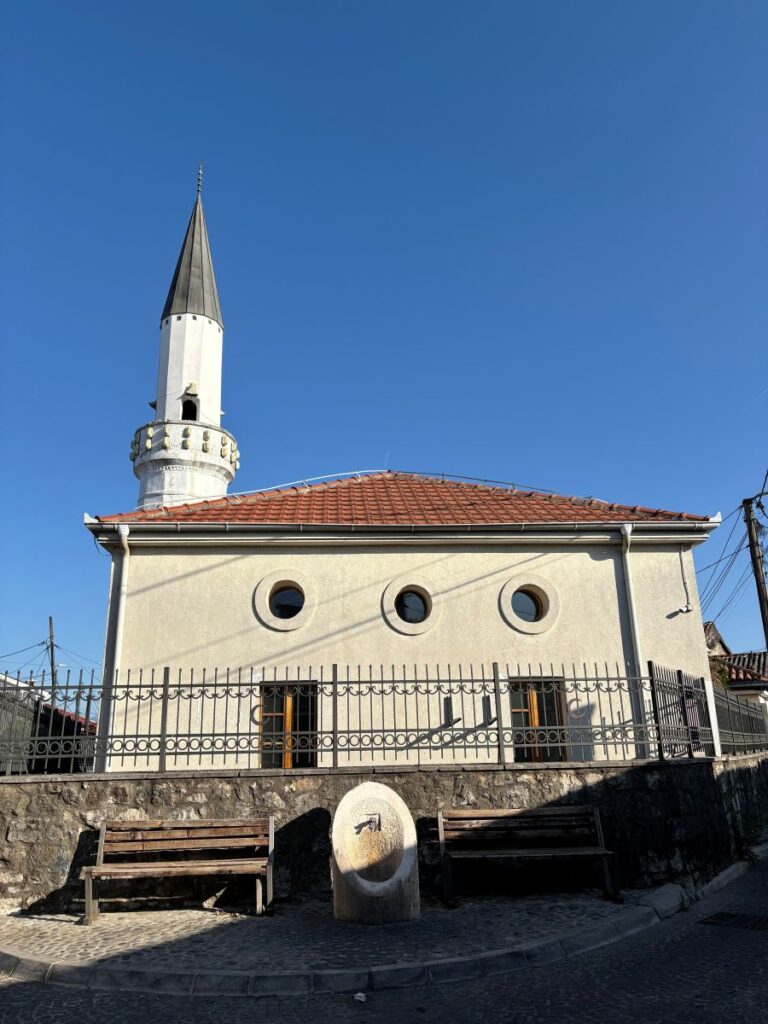
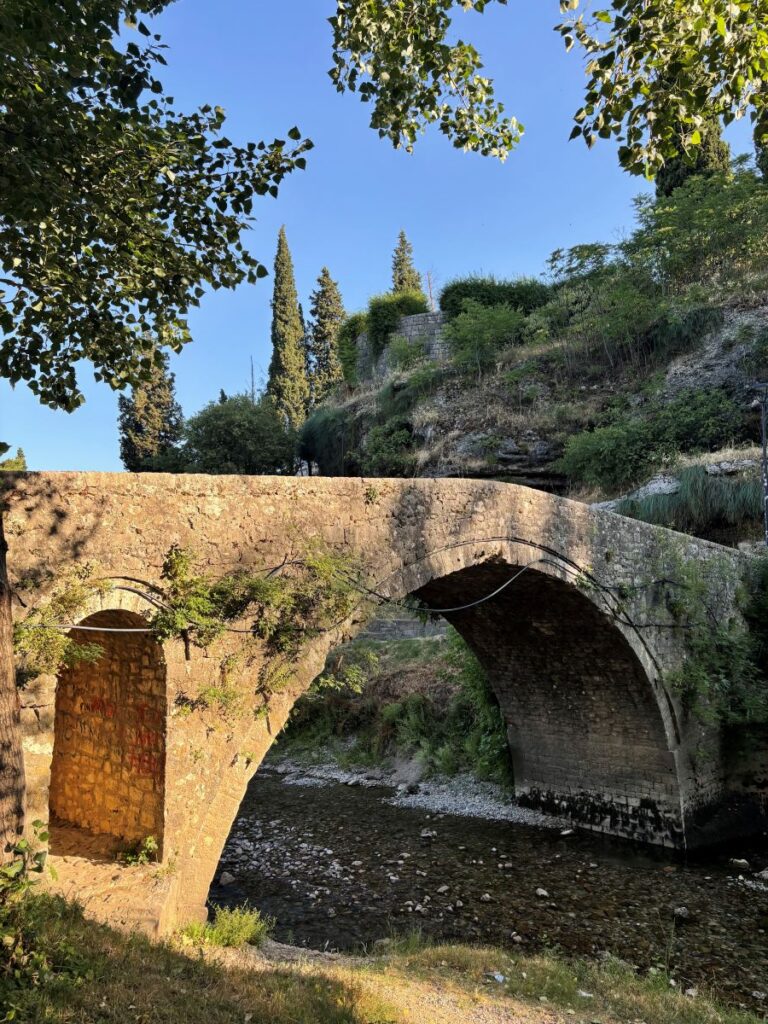
The Stone Bridge actually has historical roots in Roman times, the base of which can be seen when the river is low. It’s the oldest bridge in Podgorica and a picturesque setting indeed.
6,7 & 8
Six & seven are the two tourist offices in the city. Number eight is the largest stadium, located near Gorica Hill. There is not much to see from the exterior.
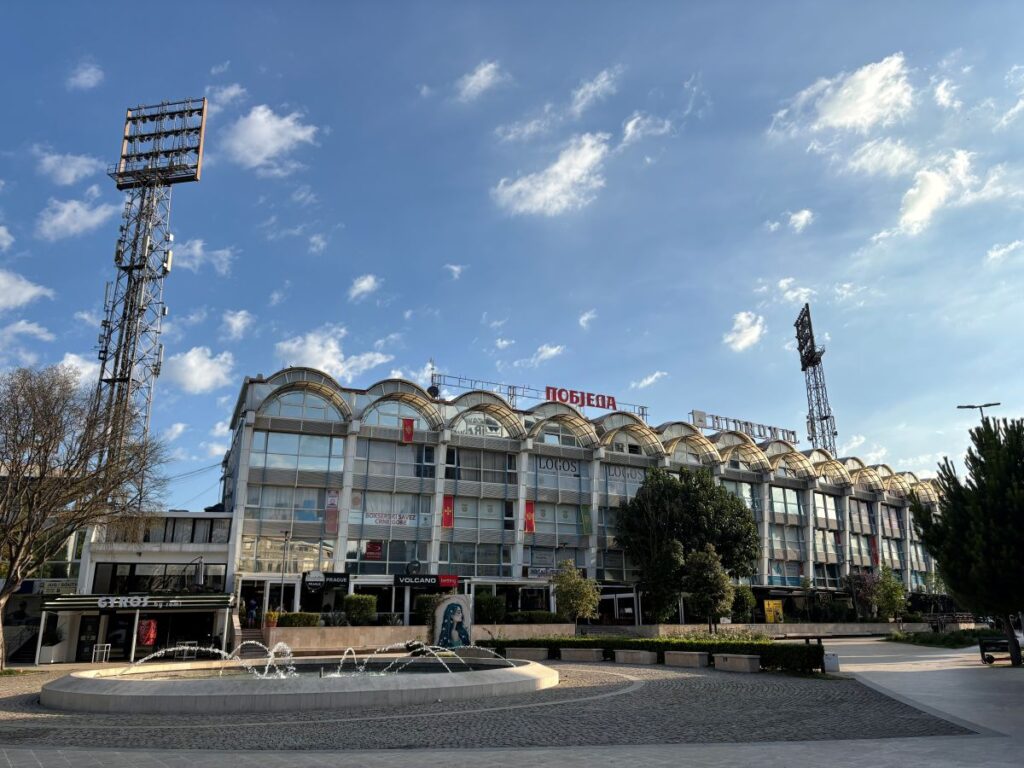
9 & 10
The Church of St. George is number 9 and the oldest building in Podgorica. Located at the base of Gorica Hill, it is a lovely old stone church built between the 9th & 11th centuries.
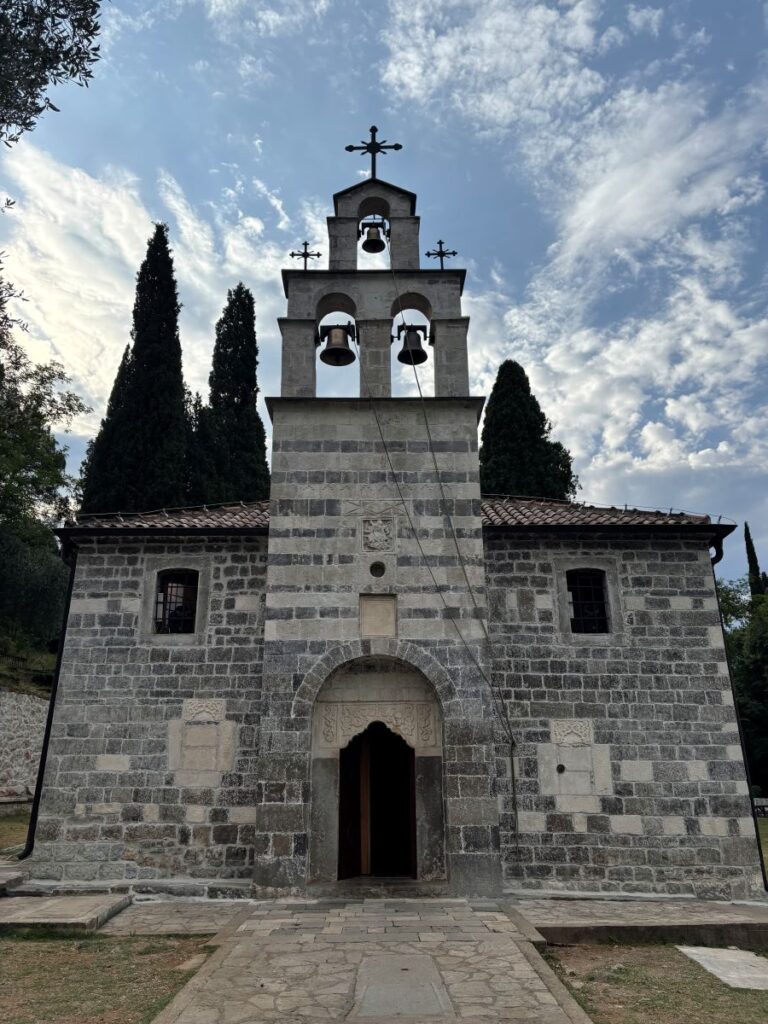
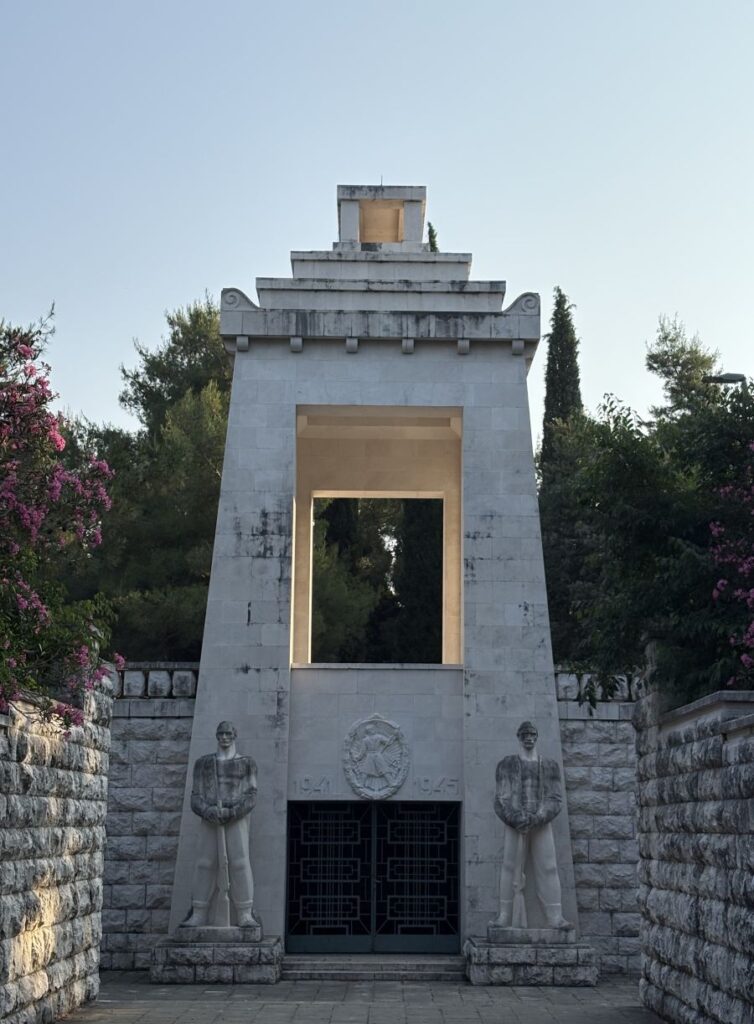
Number 10 is the Fallen Partisans Memorial; a mausoleum built in 1957. It is within a short walking distance from the church. Standing at 10 meters high, the monument has two stone solders to provide an eternal guard over the 68 fighters buried inside the crypt.
11 & 12
Not related to each other or even close together are these. Number 11 is the Ambulance building. Not sure why it is pointed out at all. Number 12 is the National Theatre of Montenegro. A large and domineering building with nothing exceptional about it. There is a small green space to one side with three pieces of metal sculpture.
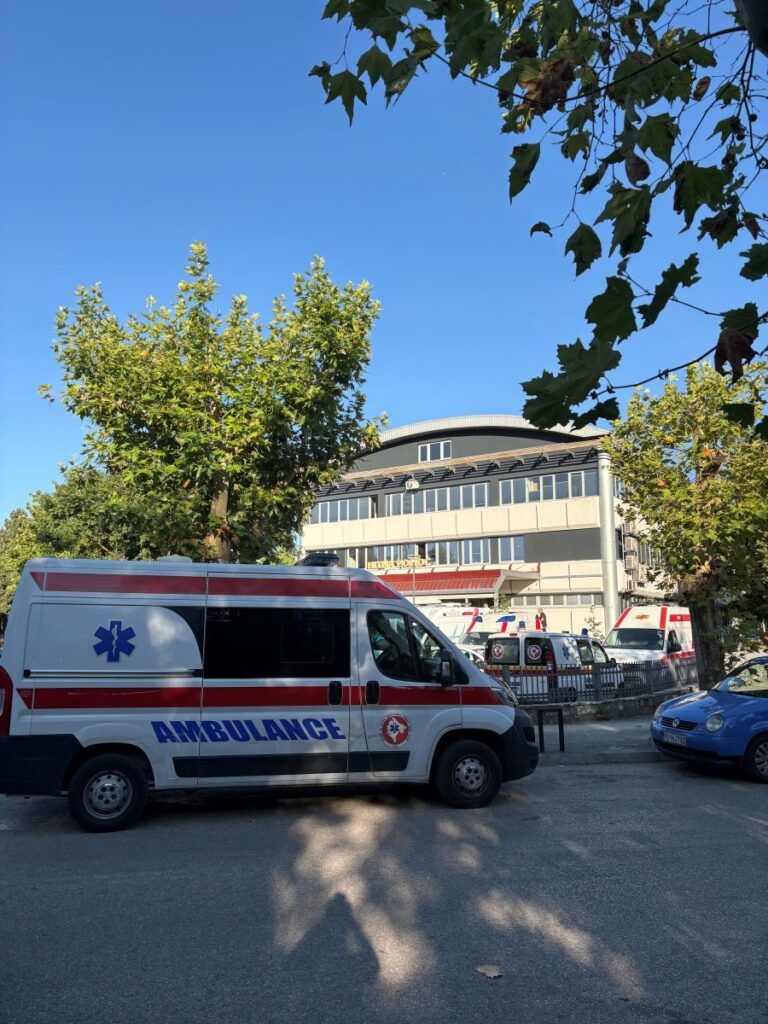
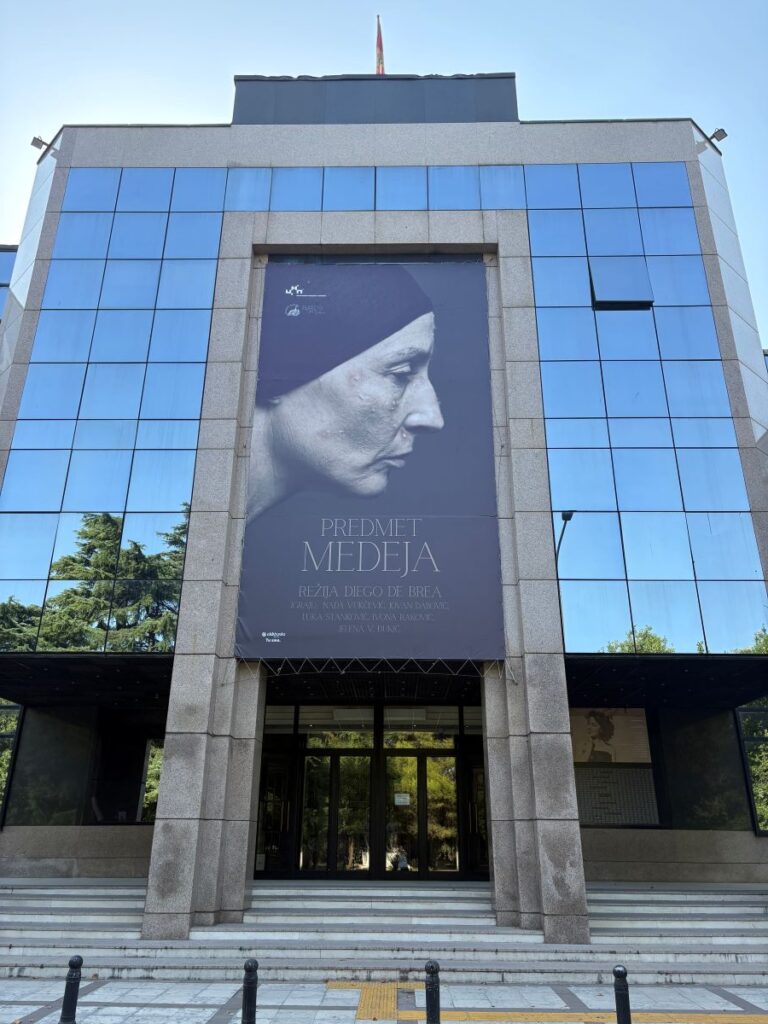
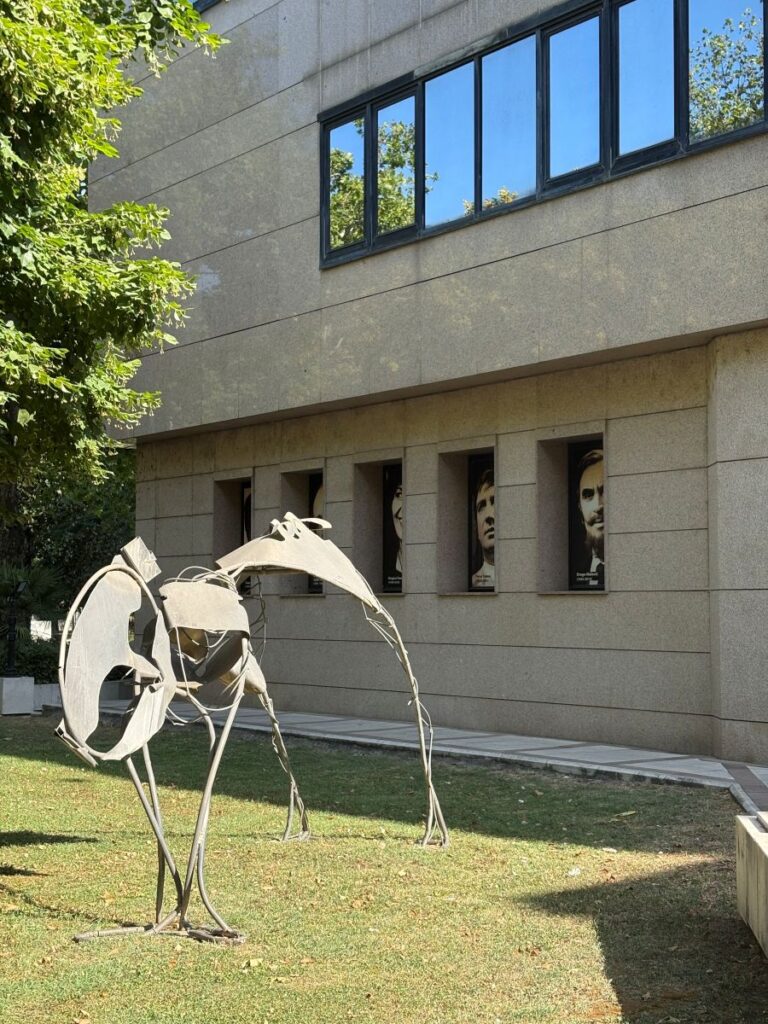
13
Millennium Bridge, the newest one to cross the Moraca River. Built by a Slovenian company, it opened in 2005 and quickly became a prominent part of the landscape. It was in fact, the first thing I noticed when approaching the city by air.
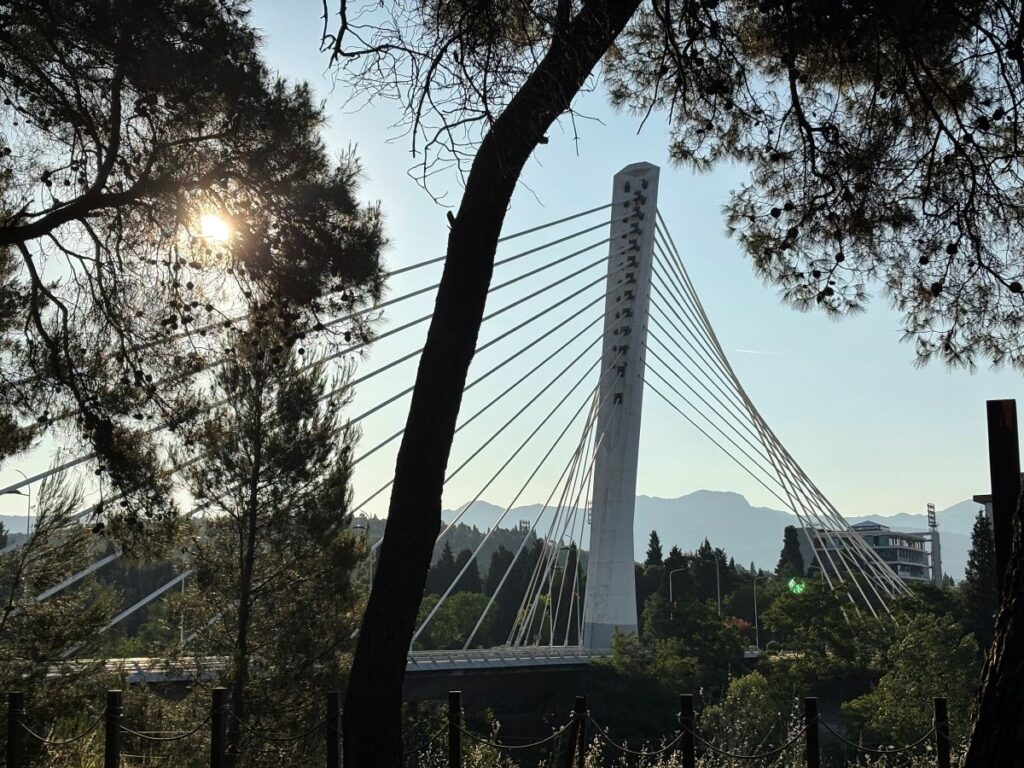
New Podgorica (14-17)
Now we are across the river and in the newest part of the city. Most of the infrastructure here is from the Yugoslav era but new construction seems to be expanding on this side of the river. Numbers 14-17 are the police department, indoor swimming pool, sports centre and the courthouse. I have not photographed any of these places as they are as utilitarian as they come.
18
The Church of the Resurrection of Christ. Probably the one thing that all tourists to the city will have on their list to see is this. After 20 years of construction, it finally opened its doors in 2013. A massive Serbian Orthodox cathedral, the exterior is white stone with carved images scattered over its surface. The interior is typically Orthodox, painted in gold and wonderfully elaborate and detailed.
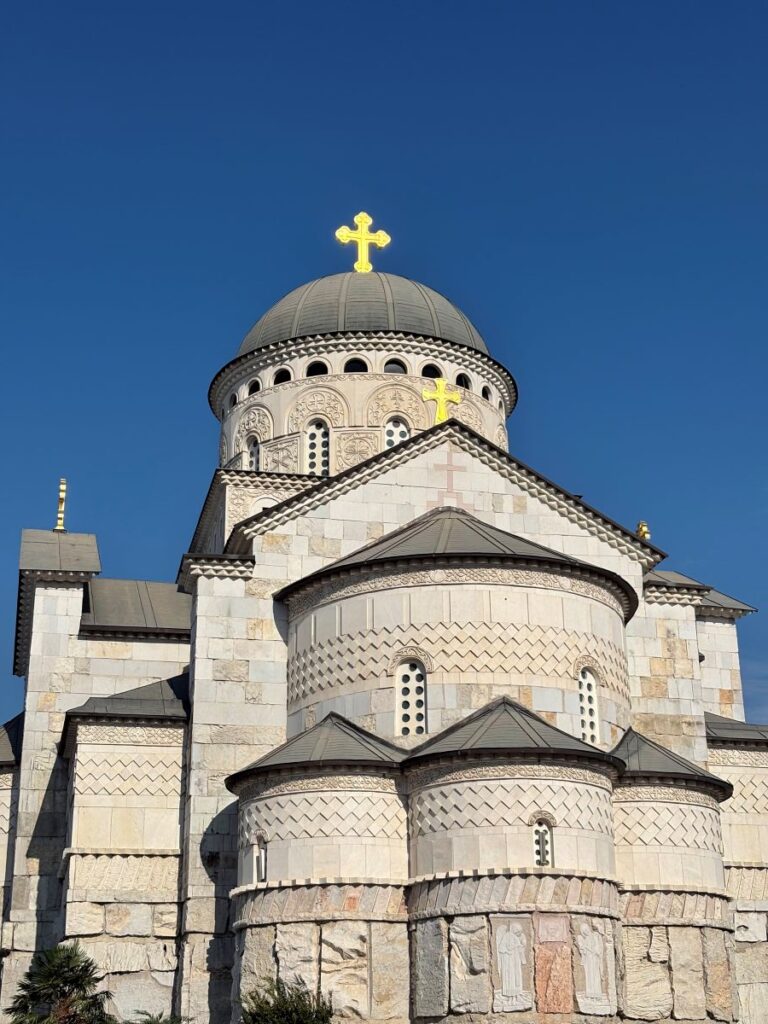
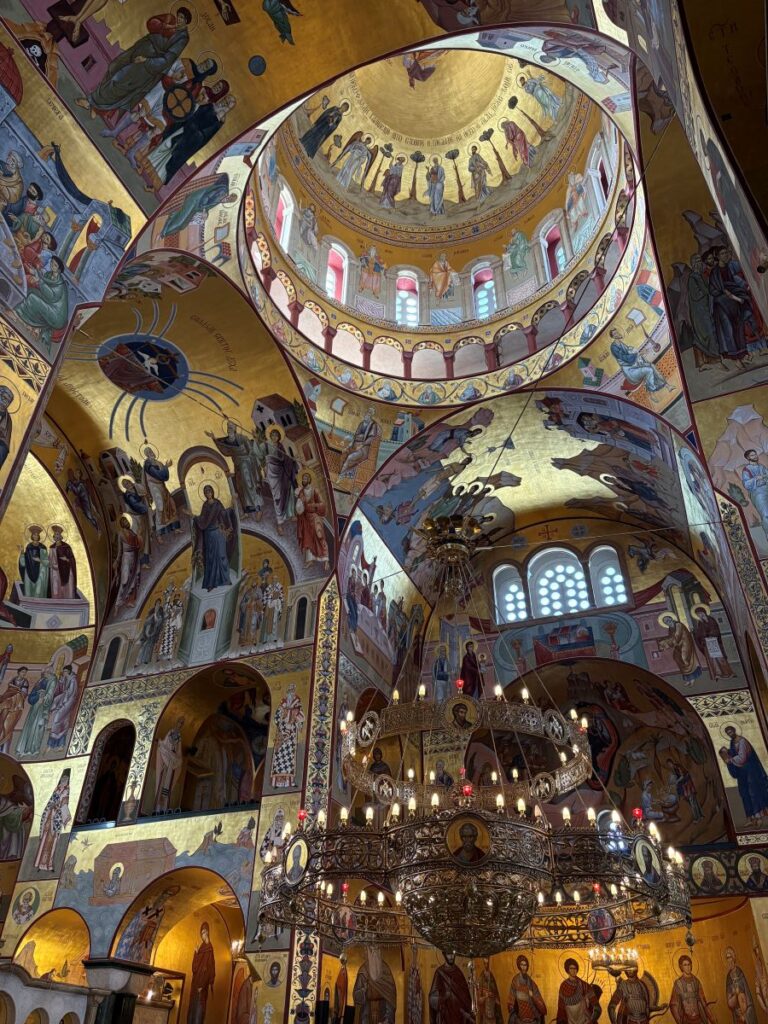
19, 20 & 21
St. Petar Cetinjski Monument is dedicated to the city’s state-builder, military and church leader of Montenegro. He stands alone in an alcove in New Podgorica and is Number 19. Across the street is Number 20 the Capital Plaza, a metal and glass business building. And finishing off the list from the Tourism Organization is Number 21…..Big Fashion, the newest mall.
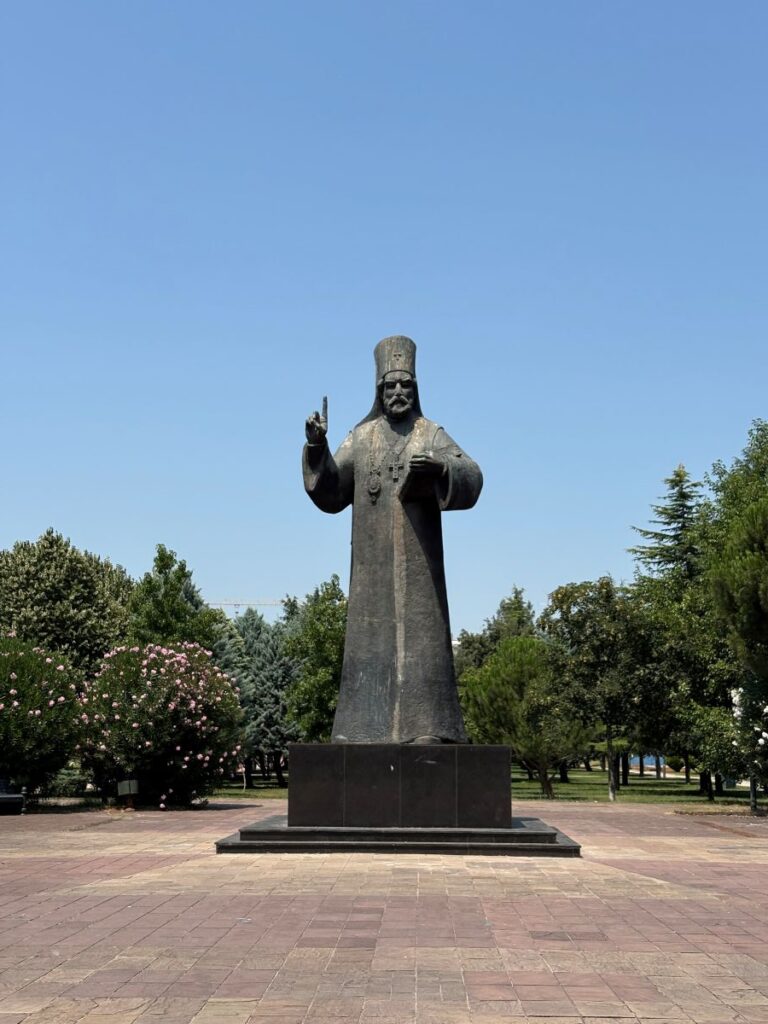
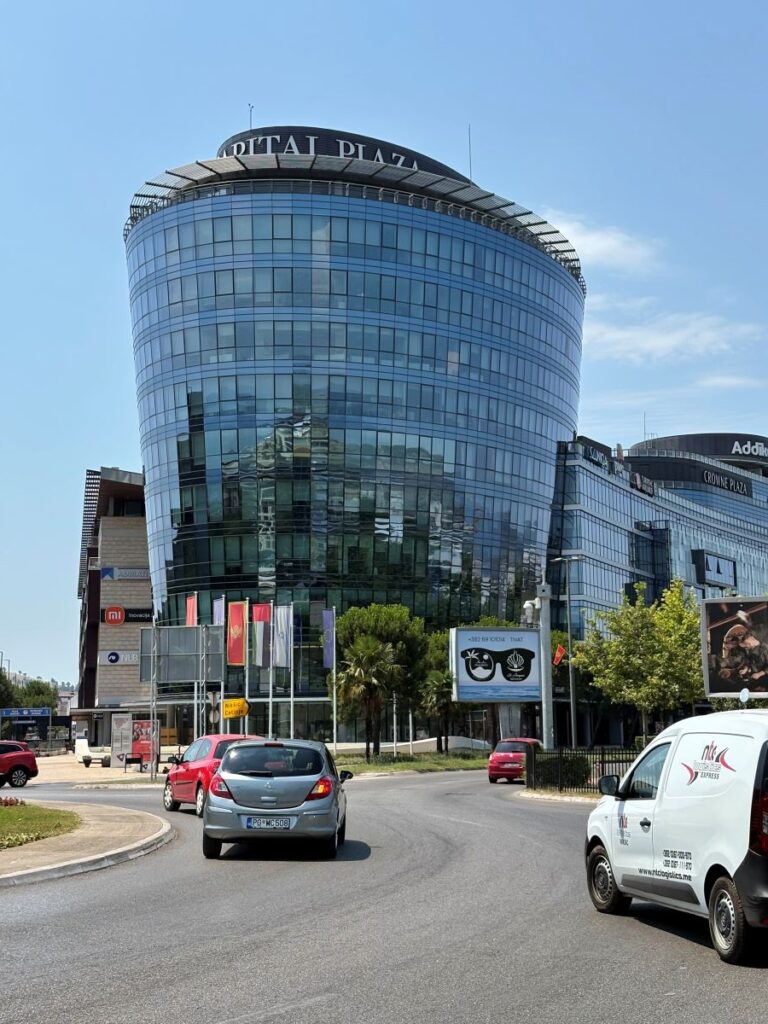
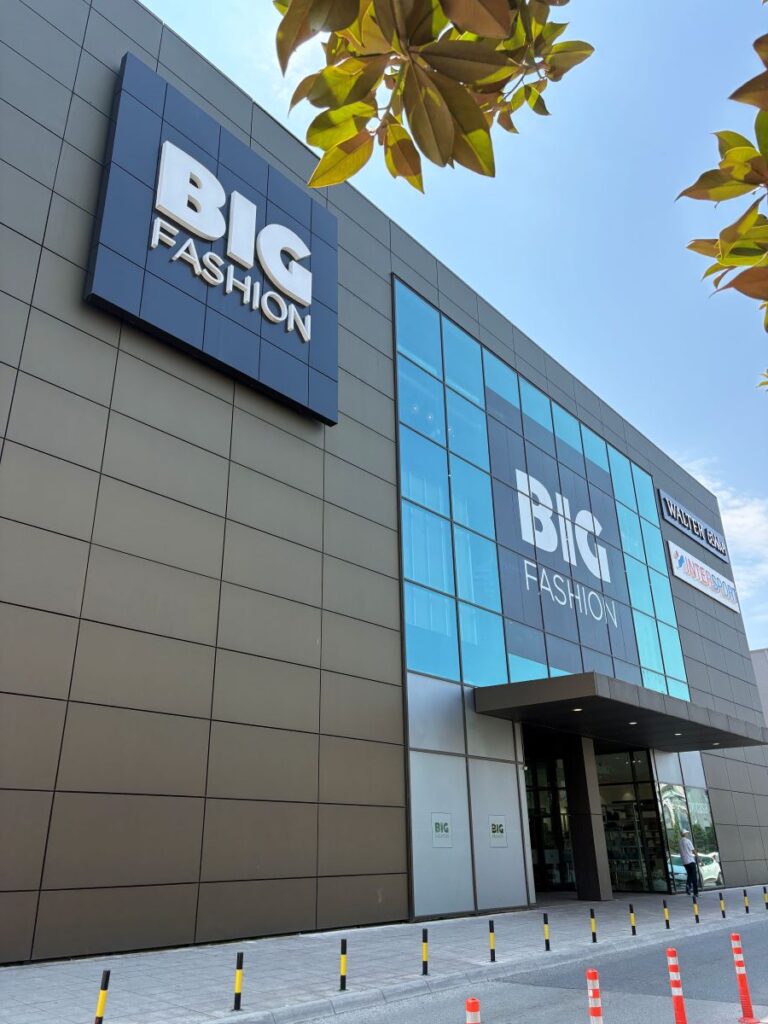
That concludes a brief breakdown of all of the sites that are recommended visitors see when they come to this capital city. I dislike comparing one place to another, like people, everyone’s past is unique and different, shaping their current state. However, I can see why Podgorica has the reputation it does. One must keep in mind though; the country only gained its independence 20 years ago when it separated from Serbia. How much can be achieved in such a short time?
